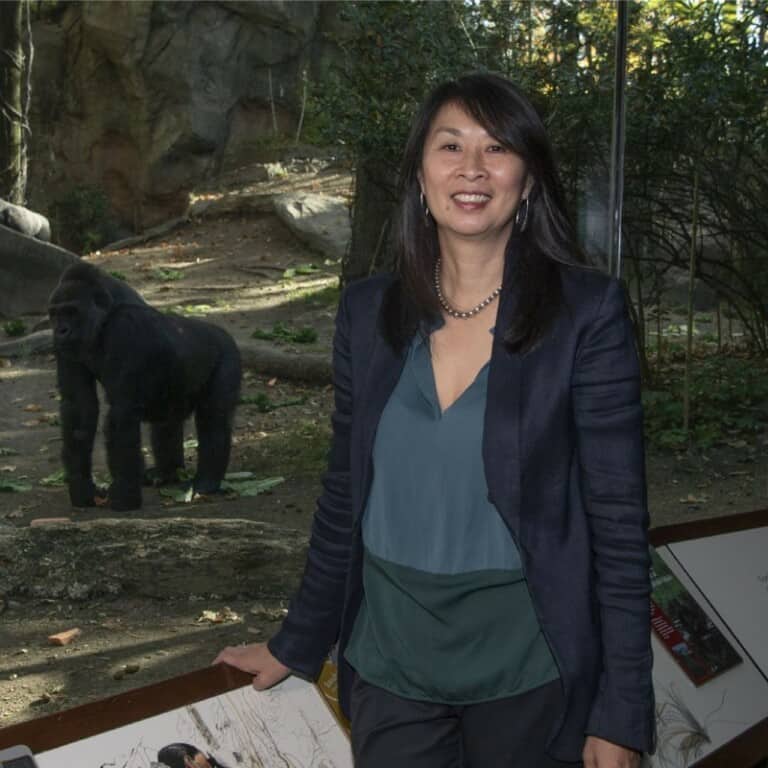Susan Chin has been with the Wildlife Conservation Society (WCS) since 1982 and took on her current role as vice president of planning & design and chief architect in 2009. She has worked on many renowned projects for WCS, including Congo Gorilla Forest, Tiger Mountain, and Madagascar! at the Lion House, as well as Ocean Wonders: Sharks and the restoration of the New York Aquarium.
Chin is a licensed New York State Architect and a Fellow of the American Institute of Architects (FAIA). She is also a member of the American Association of Museums (AAM), and the Association of Zoos and Aquariums (AZA).
WCS encompasses Bronx Zoo, Central Park Zoo, Prospect Park Zoo, Queens Zoo and New York Aquarium. Chin began her career designing zoo and aquarium exhibits with WCS Exhibition and Graphic Arts Department (EGAD), a multidisciplinary design department responsible for exhibit design, graphic design, interpretation, landscape design, architecture and construction at the four WCS locations. She now leads the EGAD team.
In her work, Chin takes a holistic design approach, making sure that her team uses every tool possible in order to create powerful exhibits that are inclusive and accessible, and which tell a story that immerses the visitor in that animal’s world.
Sustainability is another important value for Chin, and her team worked on the adaptive reuse of a landmark Beaux Arts building, the Lion House, which became New York City’s first LEED (Gold) certified landmark.
Outside of the four WSC venues in New York, the team also works on design projects around the world. Chin has contributed to a wide range of projects, including a marine research facility in Belize, interpretive centres in Costa Rica and Rwanda, and an education campus and visitor’s centre in Madagascar. With projects such as this, the aim is always to make a connection between growing urban communities and the animals around them.
